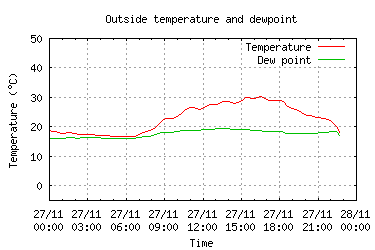
- #Easyweather import data how to#
- #Easyweather import data update#
- #Easyweather import data full#
- #Easyweather import data software#
Wireless outdoor and indoor humidity (% RH) Historical barograph displays pressure as a function of time Weather alarm modes for: a) Temperature b) Humidity c) Wind chill d) Dew point e) Rainfall f) Wind speed g) Air pressure h) Storm warningįorecast icons based on changing barometric pressureīarometric pressure (inHg or hPa) with 0.1hPa resolution Wind speed (mph, m/s, km/h, knots, Beaufort)

Wind chill and Dew point temperature display (☏ or ☌) Rainfall data (inches or millimeters): 1-hour, 24-hour,one week,one month and total since last reset.
#Easyweather import data software#
We can then pass the list to the Table.AddColumn method that we had from our previous step.All the weather data from the base station and weather history data with user adjustable measuring intervals can be recorded and uploaded to your PCĤ080 data points with adjustable (5 minute minimum) sample intervalįree PC software for transfer weather data to PC Finally we use the first row as the header. Then we filter down the rows to remove the null values. Reading the list of locations from the location range is a multi-step process. InsertedResults = Table.AddColumn(#"Promoted Headers", "Results", each WeatherApi.Results()), #"Promoted Headers" = Table.PromoteHeaders(#"Filtered Rows", ), #"Filtered Rows" = Table.SelectRows(Locations, each null and ""), As Power BI also supports Power Query, you can also use these same concepts to import data into Power BI. Now that we have our Weather API query, we can start creating the Power Query script that will import the data into Excel.

#Easyweather import data full#
Here is sample of the data: Example JSON output of the Weather APIįor full documentation on this Weather API, head over to the full Timeline Weather API documentation. The above API request returns JSON formatted data. The items in bold are parameters for the location, date range and units of measurement – we will add a way for the user to modify these easily. Paris,France/ /?unitGroup= us&key= YOUR_API_KEY

Here’s the sample weather API request we will model our Power Query Script around: We will be using the Timeline Weather API that provides seamless access to historical and forecast weather. In addition to creating your account, you can also create sample Weather API queries. To do this, head over to the Weather Data Services page. Before we can use the API, we have to create a free account. This free API provides simple access to historical weather data as well as weather forecast. We are going to use the Visual Crossing Weather API. Step 1 – Choose an API and create a sample query
#Easyweather import data update#
#Easyweather import data how to#

Steps to import JSON data from RESTful API into Microsoft Excel To download the example workbook for this guide, please see the sample in our code repository at: We are also going to explain how to create a loop within our script so that we can call the API multiple times for multiple locations and create a combined result table in our Excel worksheet. This API returns JSON-based data into Microsoft Excel. In this article we are going to demonstrate how to import data from a RESTful Weather API.


 0 kommentar(er)
0 kommentar(er)
